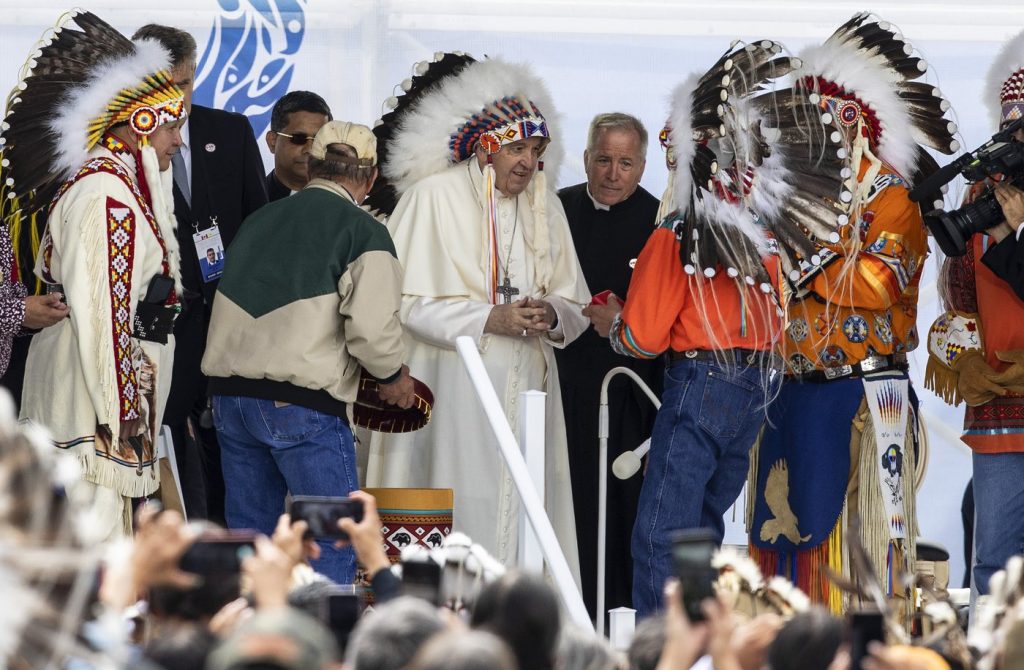The Vatican's recent announcement regarding the return of 62 Indigenous artifacts to Canadian bishops has been met with mixed emotions among Indigenous leaders. While some view it as a significant step in the reconciliation process, questions linger about the prolonged duration of the Vatican’s decision to repatriate these items.
Amy Parent, a Nisga’a scholar and UNESCO Co-Chair specializing in Indigenous knowledge research governance and rematriation, expressed her satisfaction for the communities involved but highlighted the bittersweet nature of the event. She remarked that the delay from one of the world's wealthiest churches in correcting past wrongs casts a shadow over the announcement. Parent emphasized that the artifacts should not be regarded as “gifts,” questioning the morality of categorizing items taken during a colonial period defined by violence and the genocide of Indigenous peoples as such.
The Vatican specified that the artifacts, which include an Inuit kayak, war clubs, a headdress, masks, and wampum belts, were originally acquired for the Vatican Missionary Exhibition in 1925 to showcase the faith and cultural richness of Indigenous peoples. In light of historical context, Cody Groat, an assistant professor at Western University and a member of the Six Nations of the Grand River in Ontario, discussed the coercive environment during the 1920s, notably highlighted by the Indian Act's assimilative policies and the active banning of Indigenous cultural expressions. He stated that the characterization of these items as “gifts” requires careful scrutiny.
The Vatican's commitment to returning the artifacts was initiated by the late Pope Francis during his papal visit to Canada in 2022. Groat referred to the return as “a long time coming,” although he acknowledged existing flaws in the repatriation process, optimistic that this event marks a potential turning point for Indigenous cultural restoration.
Hugh Braker, a member of the First Nations Summit's political executive in British Columbia, expressed immense joy upon hearing the news of the artifact's return. Braker highlighted the significance of these items being seized during the potlatch ban, established in the 1880s, which aimed to assimilate Indigenous populations by systematically eliminating cultural practices. He recalled how Indigenous community members long sought their regalia from museums and religious institutions after they were confiscated.
However, Braker noted the need for clarity regarding how the fragile artifacts are to be transported back to their communities, expressing concerns about their condition during transit. According to the Vatican, the items are scheduled for return to Canada on December 6, where they will be housed at the Canadian Museum of History in Ottawa before being restored to their original communities.
Parent criticized the Vatican's approach as a “state-to-state, colonial approach” to the repatriation process. Meanwhile, Groat reported that the condition of the artifacts will be assessed by the Canadian Museum of History before being transferred to national Indigenous organizations, such as the Assembly of First Nations, and subsequently to the relevant First Nations.
Braker concluded by expressing the uplifting impact the return of these items could have on Indigenous communities. He reflected on the enduring resilience of culture despite historical suppression and expressed hope for young Indigenous children embracing their heritage through language, songs, and traditional practices. He believes that the artifacts' return could play a crucial role in revitalizing Indigenous culture and languages.
The Canadian Conference of Catholic Bishops indicated that more information regarding the artifacts would be made available in early December, maintaining a commitment to aligning communications about the artifacts’ return with an Indigenous-led process.










